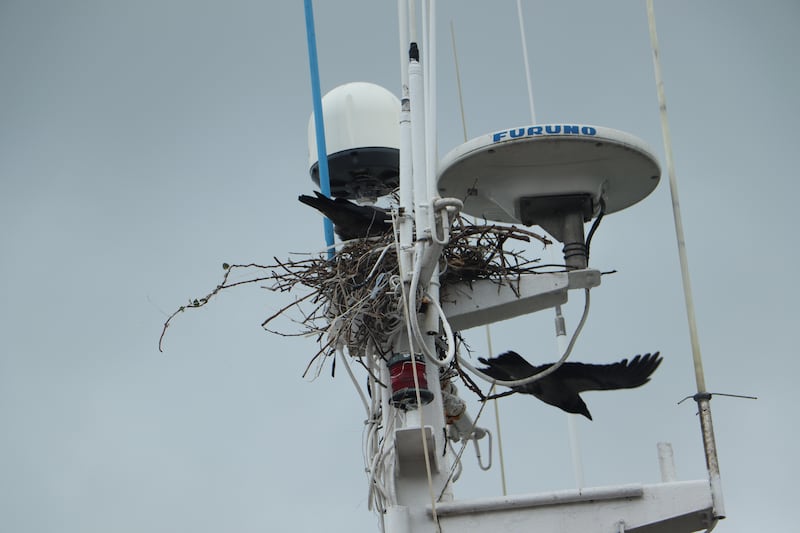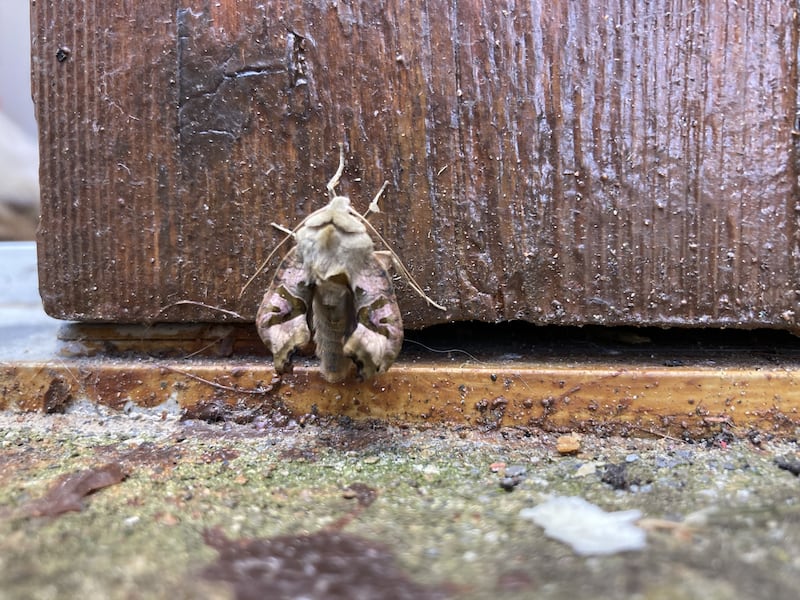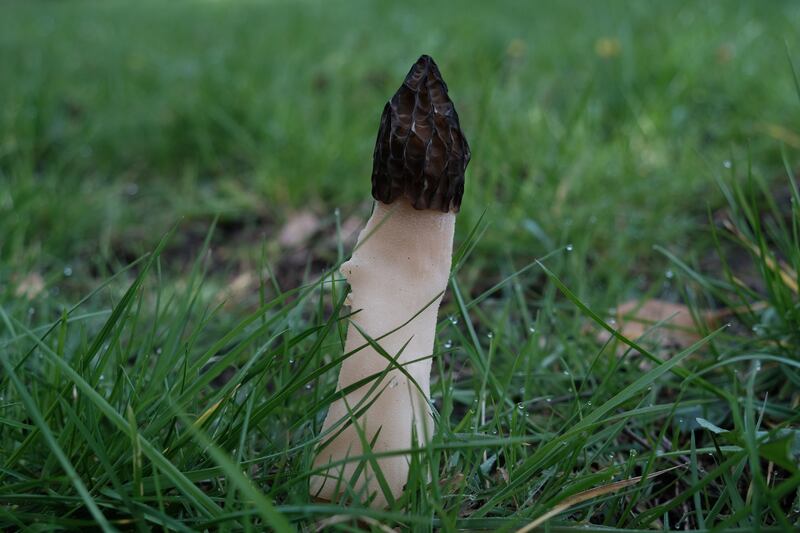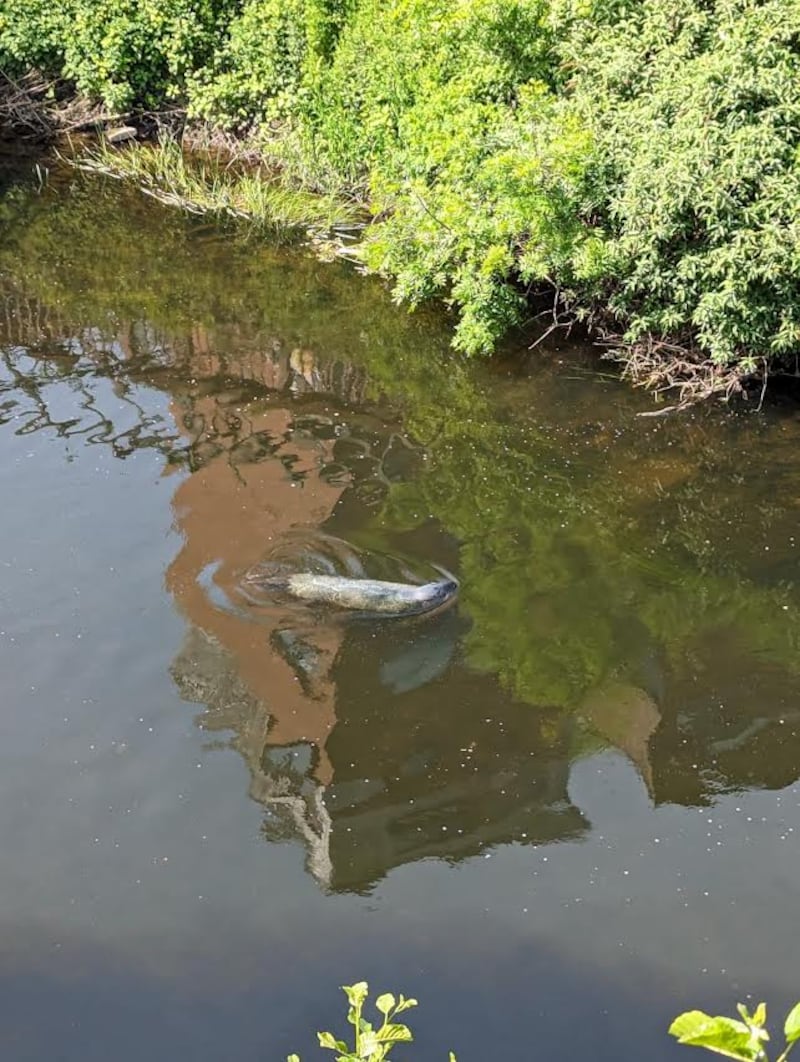I was stuffing a bedroom chimney, which hasn’t been used for decades. Imagine my surprise on finding the remnants of an old birds’ nest, including this chick’s skeleton. Any idea what type of bird it was? – Peter Murphy, Co Dublin
Aimsir caite is right. It was a jackdaw. There is really no other Irish chimney-nesting bird that would have such a robust and lengthy bill.
There must be a shortage of tall trees in Howth. I recently saw this pair of hooded crows building a nest on a fishing trawler in the harbour. – Frank Curran, Co Kildare

Obviously, these upwardly mobile hooded crows are not letting the lack of trees deter them from having a residence in Howth harbour with a prime sea view. It’s certainly unusual to see them nesting on a boat like this, and it just goes to show how adaptable and resourceful they are. You didn’t state whether or not the trawler actually goes to sea on fishing trips or is permanently moored.
READ MORE
We found this insect on our back door staying very still. We think it’s a moth but aren’t sure. Can you tell us what it is please? – Aisling Dunne (7), Co Dublin

It is a moth called the angle shades. Butterflies rest with their wings folded together vertically over their backs, although if they are just flying from plant to plant they may land with the wings open. Moths rest for long periods of time with their wings open. This particular moth always has the front edges of the forewing rolled in.
Found a large amount of these mushrooms in a paddock in Kildare. Do you know what this is? – Hugh McCarthy, Co Dublin

I do indeed and you will soon be in no doubt either when you get the strong sickly offensive smell reminiscent of blocked sewer pipes from the dark olive-coloured slime on the cap. It is the stinkhorn – Phallus impudicus – whose slime attracts flies from large distances away thinking a meal of rotten food is available. The slime sticks to their legs, acting as a means of spore dispersal. It grows on rotten wood buried in soil. Rumours of its properties as an aphrodisiac are greatly exaggerated; it is inedible to humans.
Found this guy, which had flown into my kitchen recently... not sure if he is a hornet or an Ichneumon, a stranger for sure. – Ann Duggan, Co Wexford

Not a hornet anyway, which are large wasp-like creatures, practically twice the length of our common wasp and which have not been recorded in this country yet. It is an Ichneumon, one of a large group of parasitic insects whose grubs grow up in the caterpillars of butterflies and moths. One grub, laid into the living caterpillar, grows up inside it and feeds on the living organs of the caterpillar until it reaches full size. Then the host dies, and the grub pupates into a winged adult and flies into your kitchen.
I saw this seal in the Liffey this morning – right up at Chapelizod. Is this not very far from the sea for a seal? – D Cooney, Chapelizod, Dublin

Seals are seen quite regularly in the Liffey. They swim in from Dublin Bay, often in pursuit of fish such as grey mullet, which are an estuary species. The Liffey is strongly tidal up to Heuston Station and this one must have continued upriver on the high tide. It will catch river fish such as salmon, eels and trout – probably to the disgust of resident otters who feed on these fish too. It will eventually make its way back to Dublin Bay and rejoin the grey seals there.
Please submit your nature query, observation, or photo with a location, via www.irishtimes.com/eyeonnature












